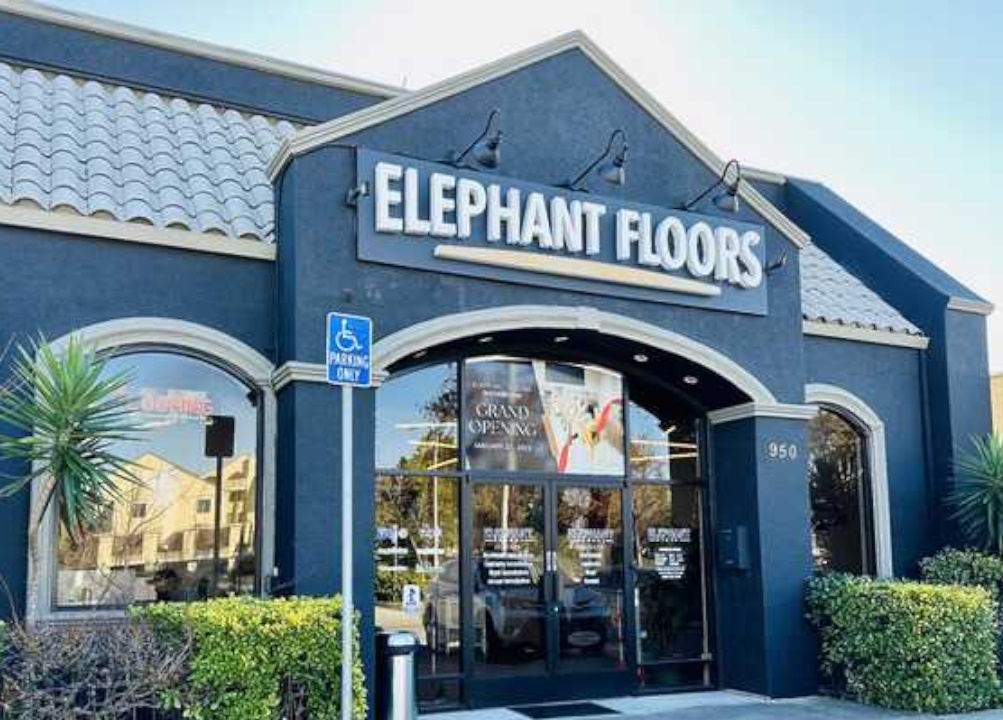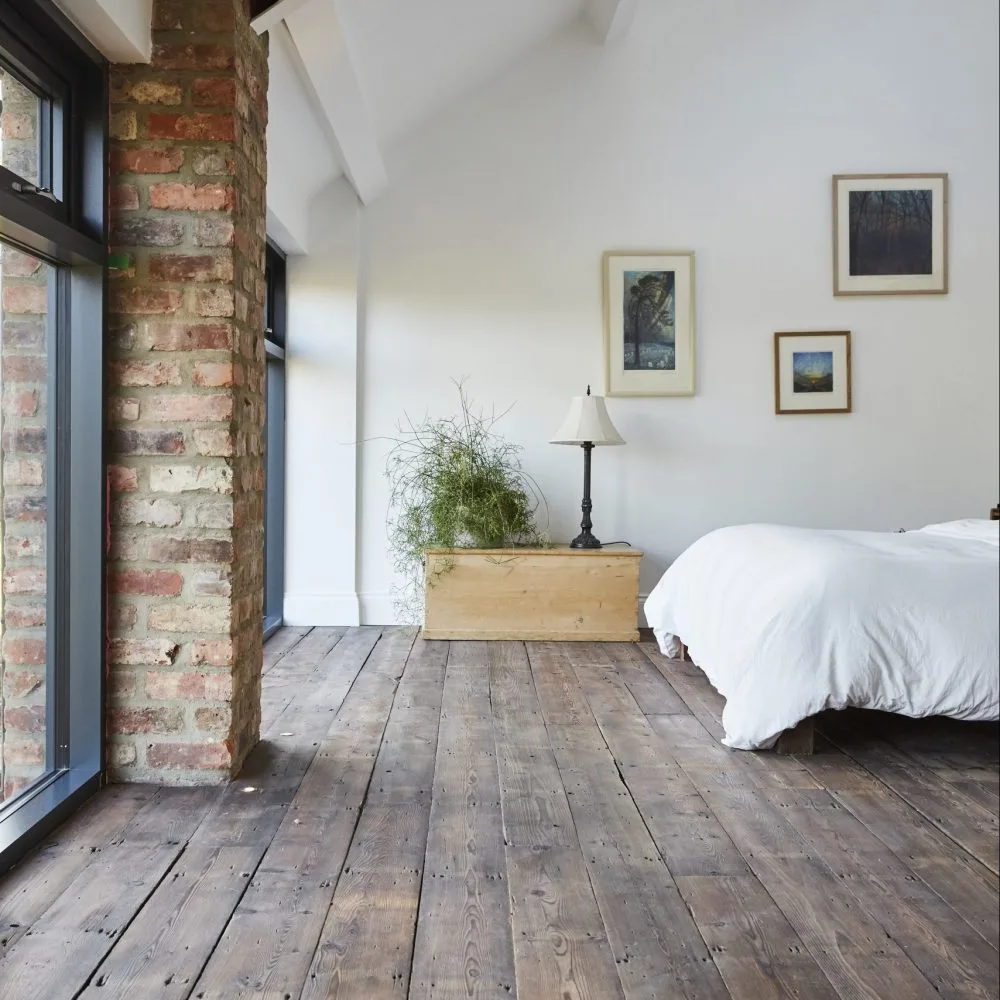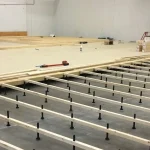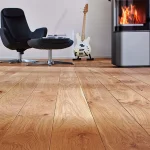- November 1, 2024
To make old hardwood floors look new, thoroughly clean them, repair any scratches, apply a wood floor restorer or polish, and maintain regular care to prevent future damage.
Hardwood floors can add timeless beauty and warmth to any home. But they may lose their luster due to wear and tear. Never mind, you can make those old hardwood floors look new again. That’s why you’re paying a bit higher price for hardwood floors.
Here’s a guide to help you through the process, featuring our recommendations for hardwood flooring care and maintenance.
When Do Hardwood Floors Need Refinishing?
It’s essential to assess whether your hardwood floors need refinishing. Here are some signs to look for:
- Visible Scratches and Dents: Feel scratches or see deep dents? It is time to refinish.
- Fading and Discoloration: Areas appearing dull indicate that the finish has worn away.
- Water Damage: Stains or warping can signal moisture problems that need addressing.
- Worn-Out Finish: If the finish wears away in high-traffic areas, it’s a sign that refinishing is necessary.
If your floors meet these criteria, a refinishing job will bring a new life into them.
How to make old hardwood floors look new without refinishing
Making hardwood floors look new without refinishing is possible with effective cleaning and maintenance techniques. Here’s how to achieve that fresh appearance:
1. Deep Cleaning
- Sweep or Vacuum: Remove dirt and dust with a soft broom or vacuum. Avoid using a vacuum with a beater bar, as it can scratch the surface.
- Mop with Care: Use a damp mop with a hardwood-specific cleaner. Avoid excessive water, as it can warp the wood.
2. Spot Cleaning
- Tackle Stains Immediately: Clean them using a soft cloth and a suitable cleaner. For tough stains, a mixture of vinegar and water can be effective (test in an inconspicuous area first).
3. Use a Wood Floor Restorer
- Restorative Products: Consider using a commercial wood floor restorer. These products can fill in small scratches and restore shine without sanding.
4. Polish the Floors
- Floor Polish: After cleaning, apply a hardwood floor polish to add shine and protect the surface. Be sure to follow the manufacturer’s instructions for best results.
5. Remove Scratches
- Scratch Repair Kits: Use a scratch repair kit or crayon to fill in small scratches. A wood filler that matches your floor color can be used for deeper scratches.
Reading Material: How to Fix Deep Scratches on Wood Floor
6. Rearrange Furniture and Rugs
- Change the Layout: Moving furniture and rugs can help hide worn areas and give the floor a fresh look. Use area rugs to protect high-traffic spots.
7. Maintain Humidity Levels
- Humidity Control: Keep indoor humidity between 30-50% to prevent warping and cracking. A humidifier or dehumidifier can help maintain proper levels.
8. Regular Maintenance
- Consistent Care: Establish a regular cleaning routine to prevent dirt buildup. This includes sweeping/vacuuming weekly and mopping monthly.
9. Use Felt Pads
- Protective Pads: Attach felt pads to the bottoms of furniture legs to prevent scratches when moving items.
10. Avoid Harsh Chemicals
- Gentle Cleaners: Use pH-balanced cleaners specifically designed for hardwood to avoid damaging the finish.
By following these steps, you can significantly enhance the appearance of your hardwood floors without refinishing, making them look revitalized and inviting.
Comparison of DIY and Professional Approaches
Here’s a comparison of DIY and professional approaches to making hardwood floors look new again, along with estimated costs for each method.
DIY Approach
- Deep Cleaning
- What You Need: Broom, vacuum, damp mop, hardwood floor cleaner.
- Cost: $20 – $50 for cleaning supplies.
- Overview: Regular cleaning removes dirt and grime, improving the overall appearance.
- Scratch Repair
- What You Need: Scratch repair kit or wood filler.
- Cost: $10 – $30 for a repair kit.
- Overview: Fill in minor scratches with matching wood filler or crayons for a seamless look.
- Polishing
- What You Need: Hardwood floor polish.
- Cost: $15 – $30 per bottle.
- Overview: Applying polish adds shine and protection, enhancing the floor’s appearance.
- Restorative Products
- What You Need: Floor restorer product.
- Cost: $20 – $50.
- Overview: These products can fill in small scratches and rejuvenate the finish.
Total Estimated DIY Cost: $75 – $160
Professional Approach
- Refinishing
- What’s Involved: Sanding down the floor to bare wood, applying stain (if desired), and sealing with a protective finish.
- Cost: $3 – $8 per square foot, depending on the condition and type of wood.
- Overview: This is a comprehensive solution for deeply worn floors.
- Professional Cleaning
- What’s Involved: Hiring a service to deep clean and possibly polish your floors.
- Cost: $0.25 – $0.50 per square foot.
- Overview: Professionals use specialized equipment and cleaning solutions.
- Scratch and Damage Repair
- What’s Involved: Professionals assess and repair scratches and damage with specialized tools.
- Cost: $50 – $150 per hour, depending on the extent of the damage.
- Overview: Ideal for significant wear or issues.
Total Estimated Professional Cost: $300 – $1,500 (depending on the size of the area and scope of work). Need professionals to do the refinishing? Call Elephant Floors.
Summary
- DIY Approach: Ideal for minor maintenance, light cleaning, and small repairs. Costs range from $75 to $160, making it a budget-friendly option.
- Professional Approach: Best for extensive damage or a complete transformation. Costs can range from $300 to $1,500 or more, depending on the size of the area and the services required.
Choosing between a DIY and professional approach depends on your budget, the condition of your floors, and how much time you’re willing to invest. For minor improvements, a DIY approach can be effective and cost-efficient. For more significant restoration needs, hiring professionals may yield the best results.
How to Protect Hardwood Floors From Damage
Prevention is key to maintaining the beauty of your hardwood floors. Here are some tips to protect them from damage:
- Use Area Rugs: Place rugs in high-traffic areas and under furniture to prevent scratches and dents.
- Furniture Pads: Attach felt pads to the bottoms of furniture legs to avoid scratching the surface when moving items.
- Regular Cleaning: Sweep or vacuum regularly to remove dirt and debris that can scratch the floor. Use a damp mop with a suitable hardwood cleaner for deeper cleaning.
- Humidity Control: Maintain consistent indoor humidity levels (between 30% and 50%) to prevent warping or cracking.
- Avoid High Heels: Encourage guests to remove high heels when indoors, as they can leave unsightly indentations.
Choosing the Best Hardwood Floors for Your Home
Are you considering replacing your old hardwood floors? Then it’s vital to choose the right type that suits your lifestyle and home aesthetics. Here are some factors to take into account:
- Type of Wood: Hardwoods like oak, maple, and hickory are durable and can withstand wear better than softer woods.
- Engineered vs. Solid: Engineered hardwood is more resistant to moisture and temperature changes, making it suitable for basements and kitchens, while solid hardwood can be refinished multiple times.
- Finish: Pre-finished options offer durability and convenience, while unfinished floors allow for custom staining and finishing on-site.
- Grain Patterns and Colors: Choose a style that complements your home’s decor. Lighter woods can create a more modern look, while darker woods add warmth and sophistication.
FAQs for Reviving Old Hardwood Floors
- How can I tell if my hardwood floors need refinishing?
Look for visible scratches, dents, fading, or water damage. If the finish feels rough or worn in high-traffic areas, it’s a sign that refinishing may be necessary. - Can I refinish hardwood floors myself?
Yes, it’s possible to refinish hardwood floors on your own, but it requires specific tools and techniques. If you’re inexperienced, consider hiring a professional for the best results. - What is the process of refinishing hardwood floors?
The process typically involves sanding the floors to remove the old finish, applying a stain if desired, and then sealing them with a protective finish. - How often should I refinish my hardwood floors?
On average, hardwood floors should be refinished every 7-10 years, depending on the amount of foot traffic and wear they experience. - What can I do to protect my hardwood floors from damage?
Use area rugs in high-traffic areas, apply furniture pads, sweep regularly, control indoor humidity, and avoid walking on them with high heels. - How do I clean hardwood floors effectively?
Regularly sweep or vacuum to remove dirt and debris. Use a damp mop with a pH-balanced hardwood cleaner, avoiding excess water for deeper cleaning. - What type of hardwood flooring is best for my home?
Choose hardwood based on your lifestyle and aesthetic preferences. Hardwoods like oak or hickory are durable, while engineered hardwood is better for moisture-prone areas. - Are there eco-friendly hardwood flooring options?
Yes. Look for FSC-certified woods or reclaimed materials that have a lower environmental impact. - How can I fix squeaky hardwood floors?
Squeaks can often be fixed by adding screws or wood glue to secure loose boards or by using talcum powder in the seams. - Can I use a steam mop on hardwood floors?
No, using steam mops is not recommended, as excess moisture can damage the wood and finish over time.
Final Words
In conclusion, old hardwood floors can be transformed from worn and dull to revitalized and inviting with the right care and attention. By discovering whether your floors need refinishing, cleaning, or other restoring techniques, you will give them a fresh look without a renovation. Additionally, understanding when to opt for DIY solutions versus professional help ensures you find the best approach that fits your budget and needs.
To protect your investment, consider the long-term benefits of high-quality flooring options. If you want to enhance your home with beautiful, durable hardwood floors, explore the offerings at Elephant Floors. With many styles and expert advice, Elephant Floors can help you find the perfect fit for your home, ensuring your floors remain stunning for years.
Visit Elephant Floors today to discover your options and take the first step toward beautiful, new-looking hardwood floors.




